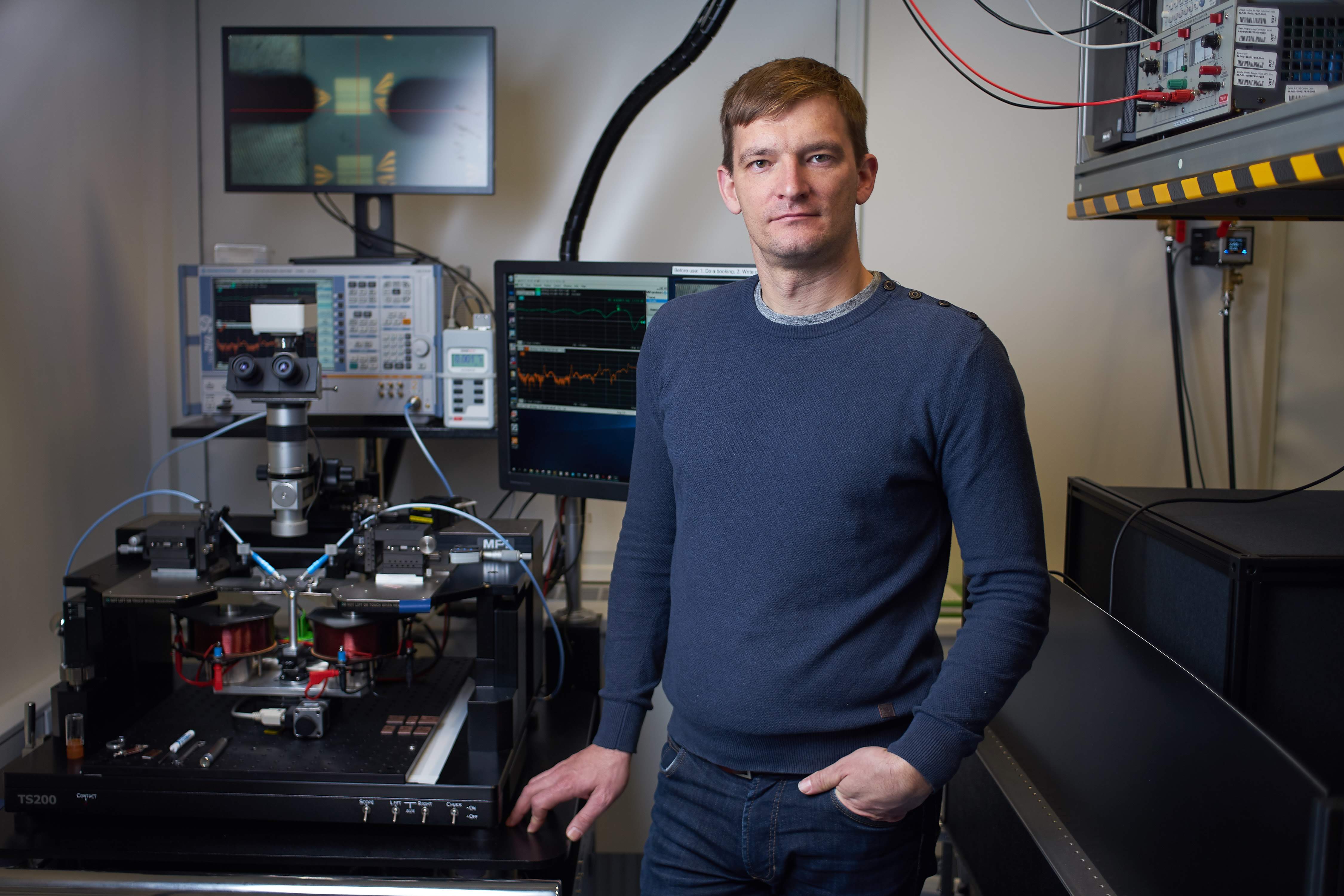9. Nov. 2023
Low-loss magnonics controlled by current and fluxons – this is the name of the project that has received financial support from the Grant Agency of the Czech Republic. It is led by Michal Urbánek, head of the CEITEC Nano Research Infrastructure, together with foreign colleagues from Poland and Austria. Within three years they would like to build the foundations of a new direction in physics which would consist in connecting magnetic materials with superconductors (so-called Ferromagnet/Superconductor hybrids will be created) and investigating their mutual influence. More specifically, the three groups of scientists want to focus on spin (magnetic) waves in such artificial systems, in particular their manipulation and control, potential for excitation and detection, including a theoretical description of the findings. All using superconducting phenomena that are beyond the reach of traditional magnetic approaches.
An international project
Oleksandr Dobrovolskiy, a Viennese expert primarily in superconductivity, came up with the idea of combining magnonics and superconducting materials. "We worked together before the project. Oleksandr mentioned that we could study how the two worlds work and how they interact. Basic testing of this hybrid connection has already been done, but only on a very small scale," explains Michal Urbánek. Michal’s team contributes to the knowledge of their Austrian colleagues with expertise in spin waves and magnonics, including experimental measurements. The two teams of experimenters are complemented by theoreticians from Poznan, who are mainly involved in magnonics.
The motivation is to prepare the background for the not-yet-realized quantum computing in the field of magnonics. Magnonics – the study of spin waves – has emerged as one of the fastest-growing research areas in modern magnetism. Traditionally, it has been a research discipline working at room temperature. However, the great interest in hybrid systems for quantum and wave computation requires the use of magnetic conductors at low temperatures and in superconducting circuit environments. "All experiments must be conducted at low temperatures. A critical temperature must be reached so that the current flows in the superconducting material without resistance and therefore without energy loss. In the case of quantum computing, we need to lower the temperature so that we can distinguish the desired excitation from thermal noise. The desired excitation can then be the quantum of a magnetic wave," he explains.
Their grant application was only successful the second time. In the meantime, however, they managed to publish the first results of these ideas. "We published a paper in the journal Physical Review Applied, where we showed the possibility of measuring the properties of magnetic materials in a way that does not require a direct view of the sample; electrical contact is sufficient. Which is important because the experiments are done at very low temperatures in a cryostat, and it's very difficult to make the measurements we typically do there. We will now follow up on this," Michal explains.

The Brno part of the project
The team in Brno, led by Michal Urbánek, will prepare samples of magnetic and superconducting materials and test whether they work and how they interact. He wants to use common superconducting materials – alloys of tungsten and silicon, molybdenum and silicon, niobium or niobium, which he will combine with magnetic materials such as iron, nickel, cobalt. The preparation takes the form of so-called magnetron sputtering. "The material to be sputtered is in the form of a plate 5 cm in diameter and 4 mm high. We shoot neutral argon ions into it. The impact of the ions causes the plate material to sputter. On the other hand, we put a substrate that traps the sprayed material. The result is a thin layer of material. This is how we prepare several samples of different materials. Of course, we must add some nano- and microstructures to spread the information," he adds. The resulting hybrids will be taken or sent to Vienna where they will be measured at low temperatures by their colleagues. Most of the experiments will therefore be carried out in Austria.
Ferromagnet/Superconductor hybrids
A spin wave propagates in a magnetic material, which affects the surrounding environment – producing a magnetic field. However, a superconductor has such properties that it does not let the magnetic field through into itself. "That's what's interesting about the combination. We get a perfect shielding from the magnetic field. The superconductor has great potential to influence the behaviour of spin waves in the adjacent material. And we want to investigate these phenomena," Michal concludes.
As mentioned above, the research is intended to prepare the "background" for quantum computing in magnonics. The principles of such quantum computing could then be used in computing centres for computers that would withstand being cooled to temperatures close to absolute zero because they would be so powerful that their energy efficiency would outweigh the disadvantage of energy-intensive cooling many times over.


 Share
Share




